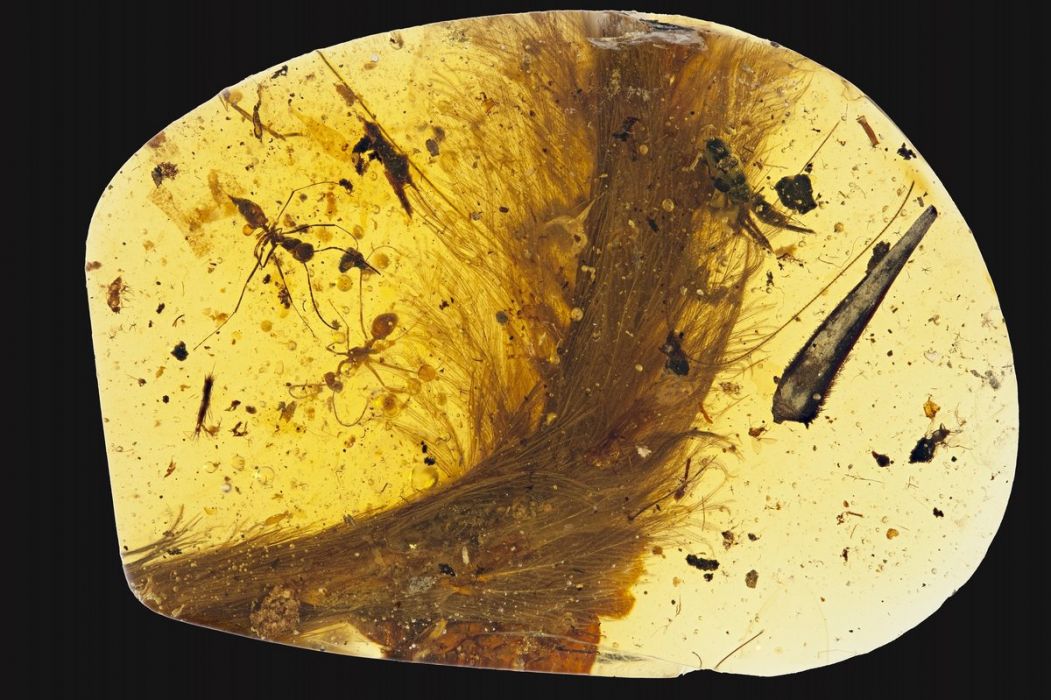The discovery was something out of a Jurassic Park film. Paleontologist Lida Xing was exploring an amber market in Myitkyina, Kachin State, last year when a local salesman brought him a lump the size of a dried apricot containing a fuzzy, brown shaft.
The salesman thought the shaft was a piece of a plant, but Xing knew right away that it was the feathered tail of a baby dinosaur.
“I have studied paleontology for more than 10 years and have been interested in dinosaurs for more than 30 years. But I never expected we could find a dinosaur in amber. This may be the coolest find in my life,” said Xing, a paleontologist at China University of Geosciences in Beijing, to NPR.
He persuaded the Dexu Institute of Palaeontology to buy the artifact.
Xing is among 14 co-authors of a report titled “A Feathered Dinosaur Tail with Primitive Plumage Trapped in Mid-Cretaceous Amber”, which came out today.
The report highlights the significance of the 99-million-year-old discovery, pointing out that this is the first time scientists have been able to clearly associate well-preserved feathers with a dinosaur. Previously, scientists have had to rely on individual feathers found in amber or on fossilized impressions of dinosaur feathers.
Now, the 1.4-inch tail fragment is allowing scientists to piece together early moments of differentiation between dinosaurs and birds.
Researchers have extrapolated from the eight vertebrae in the fossilized amber that the beast that owned them was a juvenile coelurosaur that originally had more than 25 vertebrae. It would have been small enough to dance in the palm of your hand, but no, it probably could not fly.
Had it not gotten itself trapped in amber, it would have grown to be nearly the size of an ostrich.
“A lot of baby birds look kinda creepy, to be honest. This one was probably fairly cute and fuzzy. Not your terror-of-Jurassic-Park type,” said Ryan McKellar, curator of invertebrate paleontology at the Royal Saskatchewan Museum in Canada and a co-author on the paper, to NPR.
Indeed, this may be one of the most adorable dead babies on record.
Debate is still out on what the purpose of dinosaur feathers was. Some say they helped regulate temperature, while others say their iridescent sheen helped attract mates. Others wonder whether some dinosaurs further down the evolutionary tree could fly.
The amber, formally called DIP-V-15103, was found in Kachin State’s Hukawng Valley, which National Geographic reports “most likely contains the world’s largest variety of animal and plant life from the Cretaceous period”.
Like most Burmese amber, this piece was destined to become jewelry. When Xing first saw it, the piece had already been sculpted into an oval. However, rather than compromising the specimen, the sculpting exposed a cross section of the tail to the surface of the amber, allowing scientists to study its chemistry.
Xing told National Geographic he believes that the “nearing end” of the conflict between the Myanmar government and the Kachin Independence Army, which controls the Hukawng Valley, will lead to increased scientific access to the amber mines and, in, turn, to an increase in spectacular discoveries.
This is probably as likely to happen as Xing is to find a complete dinosaur.




